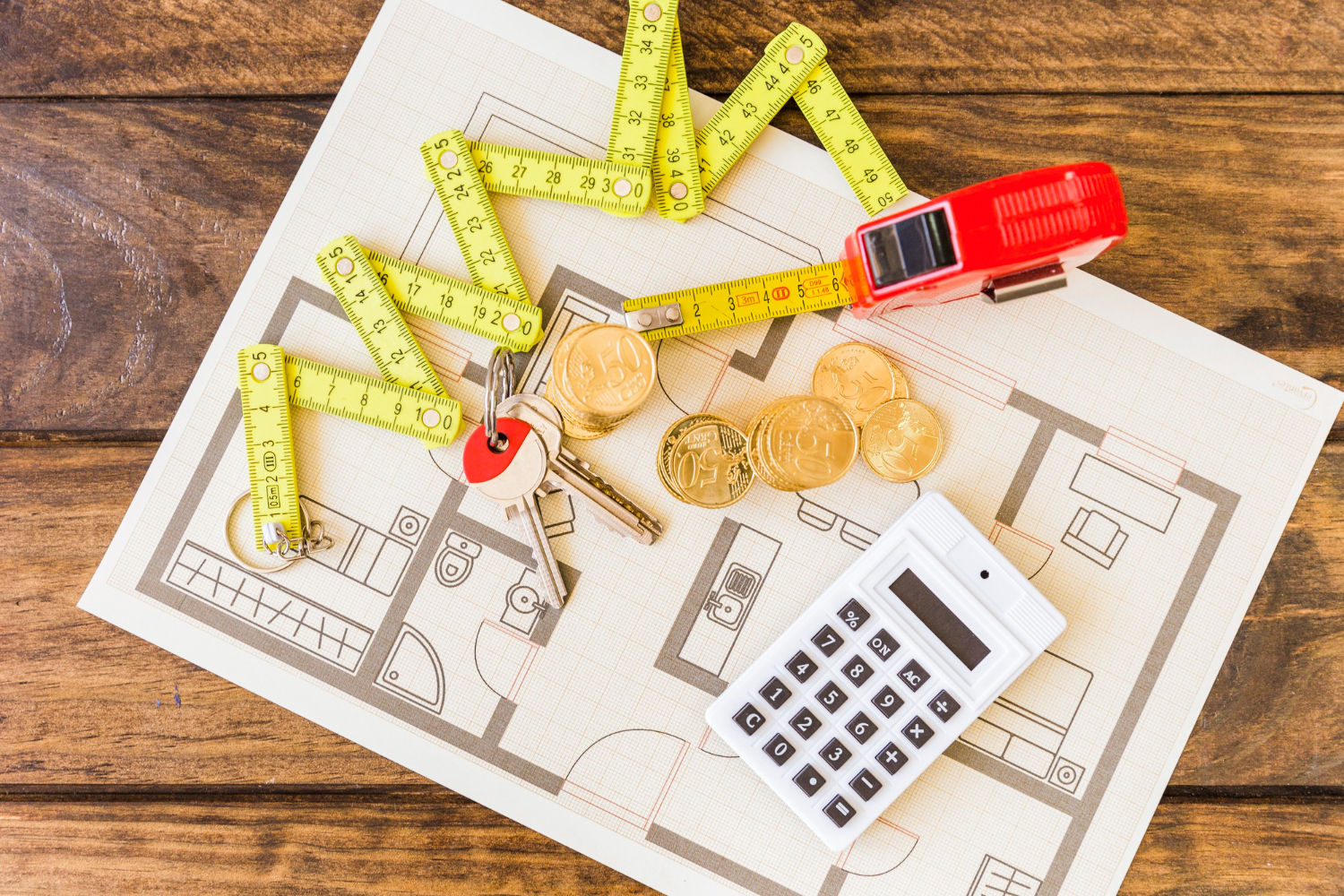Home extension costs: why price per square metre isn’t enough
Founder, Planning to Build

When you're planning a home extension, one of the first figures you’ll likely come across is the “average cost per square metre.” It’s an attractive shortcut — a quick way to ballpark how much your project might cost. But relying solely on this figure can lead to unrealistic expectations and budgeting surprises further down the line.
In this post, we’ll explain why price per square metre is a helpful starting point, but not enough on its own to accurately plan or budget your extension.
Square metre pricing - too broad to be useful on its own
According to Checkatrade’s 2025 guide, the average cost of a house extension is: £1,800 – £3,000 per square metre. That’s a £1,200/m² difference — and when you apply that to a typical rear extension size of around 25m², it puts the estimated cost of your extension anywhere between £45,000 and £75,000
That’s a £30,000 difference, for the same size extension.
This massive range leaves most homeowners guessing. It doesn’t reflect the layout, the internal spec, your location, or how complex the build is — just the rough physical area. And when you’re planning one of the biggest investments in your home, guessing isn’t good enough.
Square meter estimates vary across the industry
If you've been researching extension costs online, you've likely noticed a significant variation in the figures presented. Different sources provide differing estimates for the cost per square metre of a single-storey extension in the UK:
- Checkatrade suggests budgeting £1,800–£3,000 per m².
- Homebuilding & Renovating estimates £2,200–£3,300 per m², excluding VAT.
- MyJobQuote provides a broader range, from £900–£2,200 per m², depending on the quality of finish.
- Devis Architecture notes that in London and Surrey, costs can range from £2,500–£3,500 per m².
That’s why relying on a single square metre figure to budget your extension is risky — the range is just too wide to offer any real certainty.
So what actually drives the cost up (or down)? Let’s take a closer look.
Beyond the basics: what impacts extension pricing
Even when extensions are the same size on paper, the total cost can differ dramatically depending on these key factors:
Internal fit-out and specification
A high-spec kitchen with stone worktops, designer taps, and underfloor heating will cost far more than a basic shell finish. The more you put into the space, the more it costs to build — and price-per-m² estimates often don’t reflect that.
Structural work and complexity
If your extension involves knocking down structural walls, adding steel beams, or altering rooflines, it adds cost quickly. More complex builds take more time, more labour, and more engineering.
Glazing and openings
Large sliding or bifold doors, roof lanterns, or oversized windows look amazing — but they’re far more expensive than standard windows or French doors. They also often require additional structural support.
Site access and logistics
Can a digger access your back garden? Or do materials need to come through the house? Poor access adds cost due to increased labour time and manual handling.
Existing property conditions
Older homes might need upgrades to electrics or plumbing to meet building regulations, or could reveal surprises like asbestos or damaged drains once work starts.
Location and labour rates
Labour and material costs vary widely across the UK. London and the South East are typically more expensive than the Midlands or North — which is partly why square metre costs span such a wide range.
Professional Fees and Permissions
Planning applications, architectural drawings, structural calculations, party wall agreements, and building control inspections — these all add cost, and often sit outside the “headline” per-square-metre figure.
Industry Insight: Over Half of Projects Exceed Budget
According to a Financial Times article, surveys by RedBook and Houzz UK indicate that over half of renovation projects exceed their budgets, often due to unexpected costs and time overruns. Factors include rising material prices, labor shortages, and clients making mid-project changes.
This real-life example shows how quickly extension projects can spiral beyond expectations. Having a more accurate budget — one that goes beyond the basic cost per square metre — gives you a far better chance of keeping your project on track, avoiding stress, and protecting your vision..
Beyond price per square metre: a better way to budget
While square metre rates are a helpful starting point, they simply don’t reflect the full picture. Every extension is different — shaped by design, specification, site conditions, and professional fees. If you’re serious about getting your project off the ground, a more tailored approach to budgeting is essential.
Here’s how to get a clearer, more realistic view of your extension costs:
- Break down the build: Start by listing what you plan to include — kitchen? glazing? utility room? The more detail, the better.
- Factor in the unseen: Don’t forget about planning fees, surveys, structural engineering, and building regulations.
- Get early cost input: Before finalising your design, get ballpark figures from a builder or use a tool that reflects real-world cost ranges.
- Always add a contingency: 10–15% is standard to cover the unexpected.
To make this easier, we’ve built a free, easy-to-use extension cost calculator. It goes beyond just size — taking into account finishes, complexity, and key project features — so you can get a far more useful budget estimate before you commit to designs or quotes.